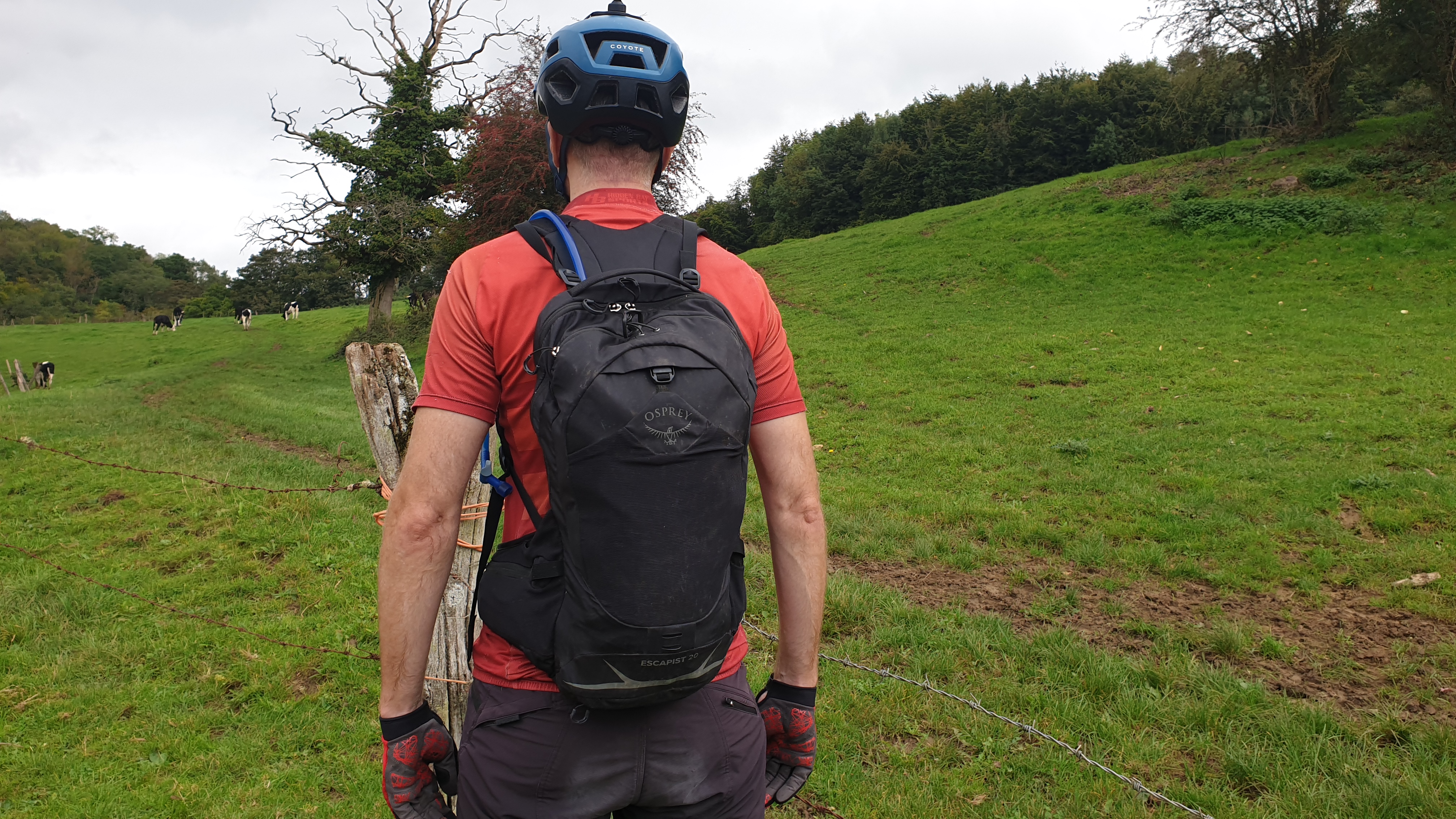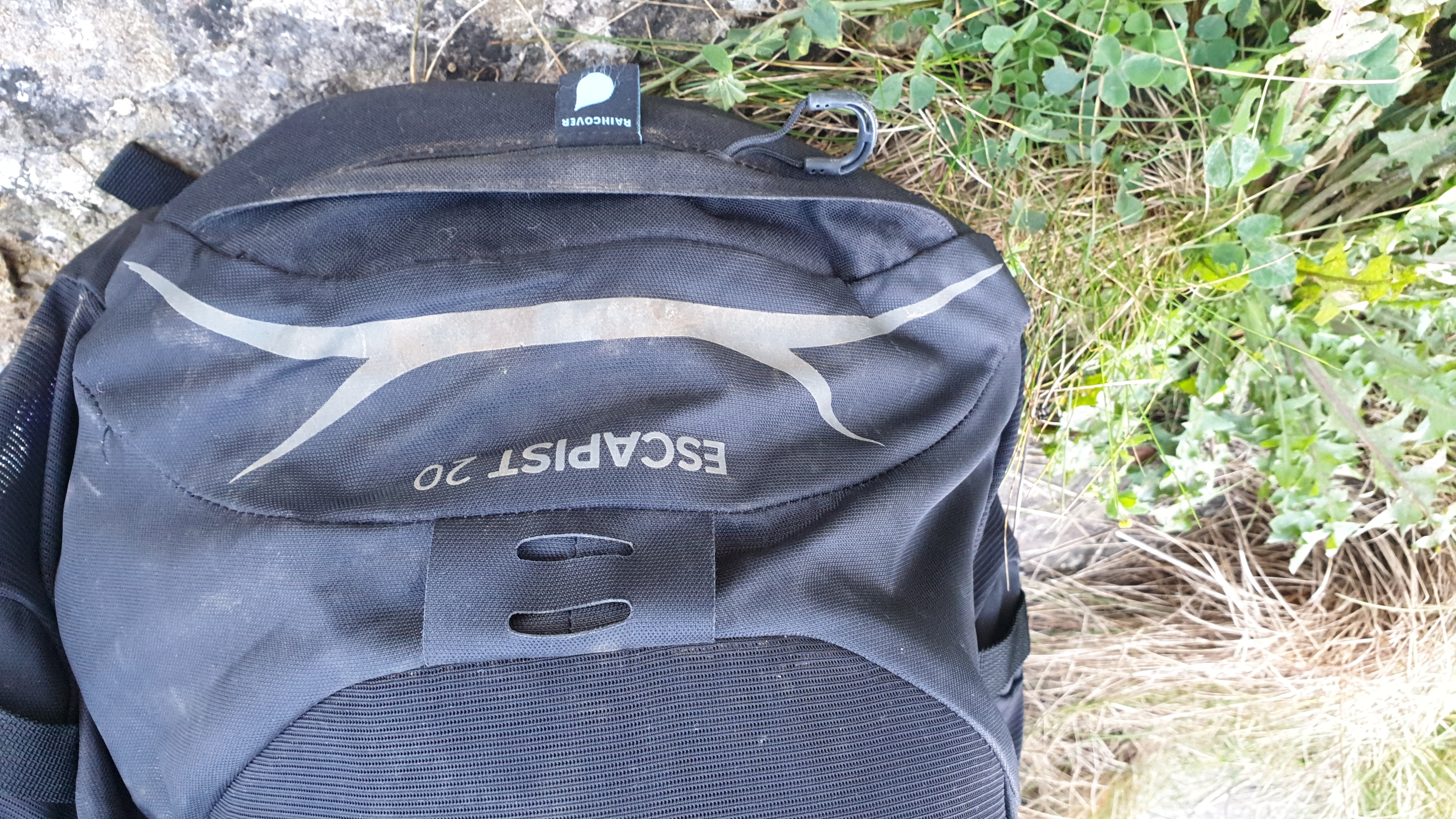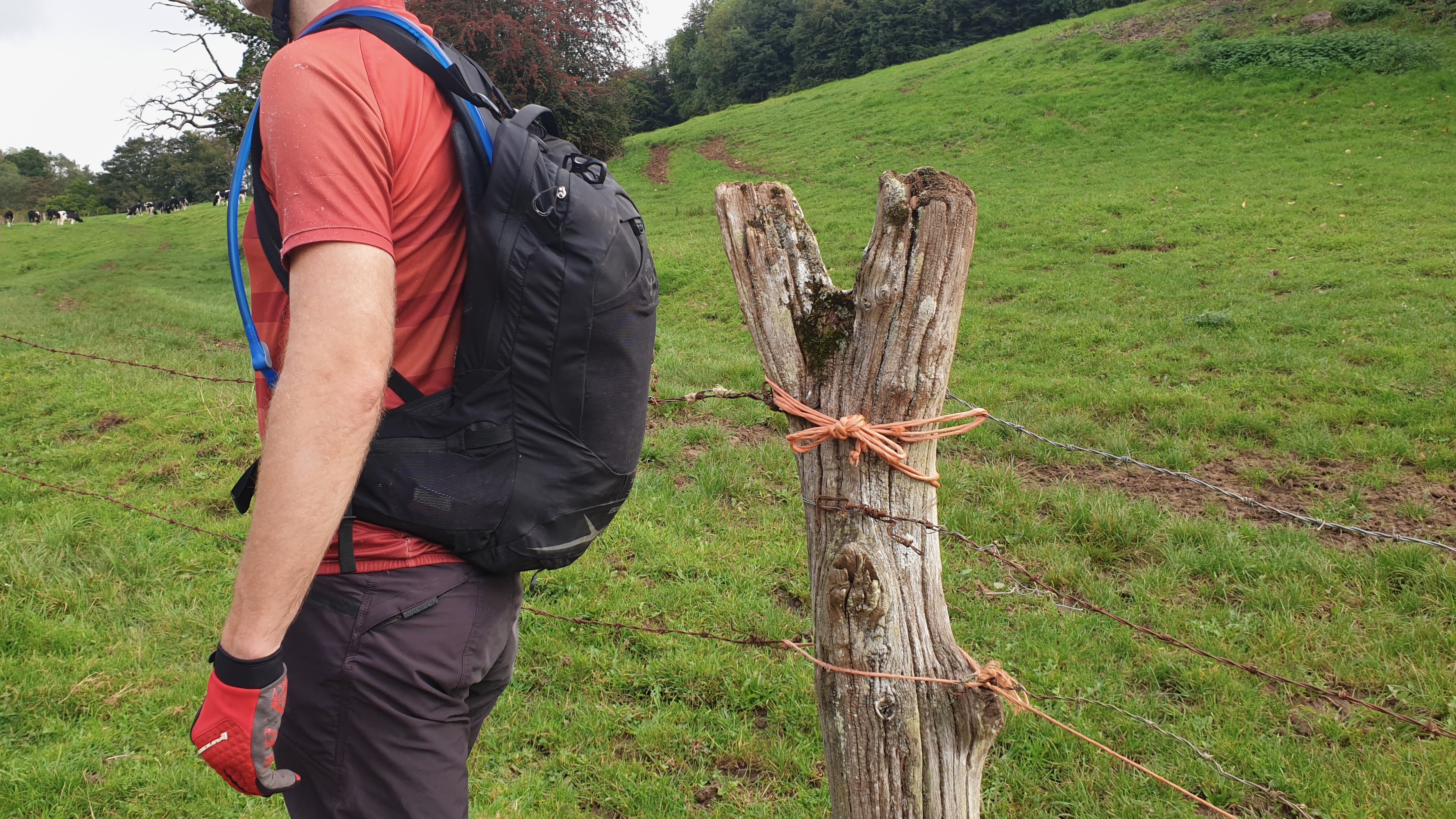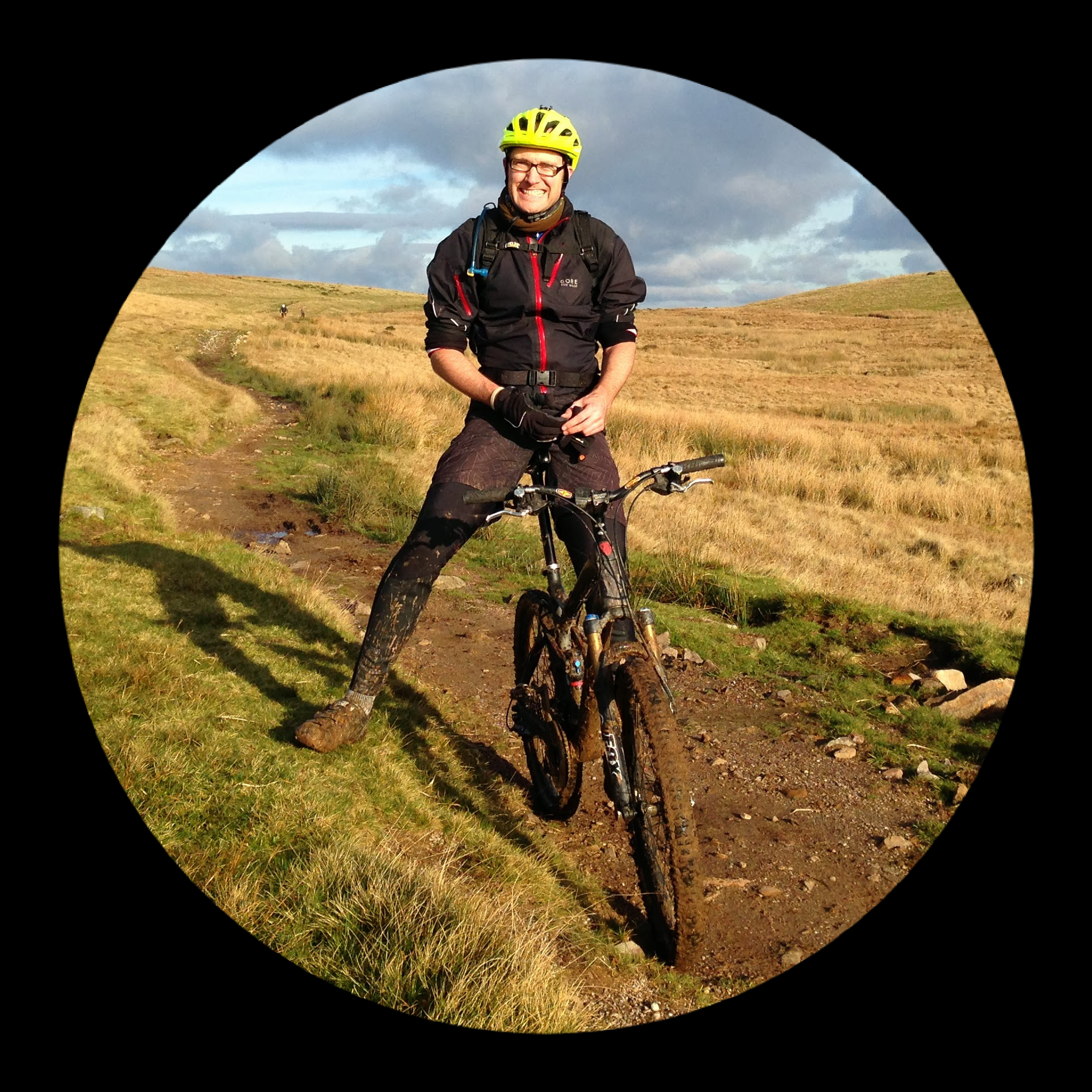Bike Perfect Verdict
Osprey's Escapist 20 is a highly adjustable, super-stable, low-profile stunner of a medium-sized pack, ideal for big days out in the mountains.
Pros
- +
Extremely stable
- +
Low profile
- +
Two length options
- +
Highly adjustable for fit
- +
Reservoir very easy to insert
Cons
- -
Can feel warm on hottest days (like most packs)
- -
Expensive, though similarly priced to rivals
Why trust BikePerfect
In 1974, Mike Pfotenhauer was fresh out of university and set up Osprey in Santa Cruz, California, with the aim of creating innovative, quality backpacks. Osprey is now a big international brand and Mike still works as lead designer. These days there is stiff competition, with multiple brands vying for the best MTB backpack spot. We’ve reviewed a selection of these in our hydration packs guide. Osprey’s Escapist 20 pack performs brilliantly for those bigger days on the bike, but if you need even more carrying capacity for bikepacking there's an Escapist 25 ($160 / £130) and Escapist 30 ($180 / £140). Note that all three models aren't available to buy on Osprey's US site until spring 2024, but are for sale in Europe and the UK.

Design and aesthetics
The Osprey Escapist 20 comes in a S/M size, with a volume of 18 litres and to fit a back length of 40.5cm to 48-51cm, and a M/L, with a volume of 20 litres, fitting a back length of 48-51 to 58.5cm (back length measured from top of hip bone to base of neck). The main section of the bag is an even width for the length of the back and the back panel is quite wide compared to some competitors. As a result, the pack is low profile and doesn’t protrude from the back that much when loaded. The body of the pack is made from 210 denier fabric, while the base is made from a denser, harder-wearing 500 denier material, both with a DWR coating. In line with the brand’s green credentials, the fabrics are Bluesign-approved and 100 percent recycled. The DWR treatment is Per- and Polyfluoralkyl Substance (PFAS) free, therefore not adding to the amount of these ‘forever chemicals’ in the environment.
The pack consists of two zippered compartments: the main one running the full length of the pack, and a smaller pocket one at the top, which includes a key clip. The two-way zips to the main compartment run up and over the top of the pack and down a decent way on both sides, allowing for easy access to items. All zip-pulls have usefully sized loops, including a rigid plastic part which means they’re a doddle to use with gloved hands.

There are open-topped side pockets on either side at the back of the hip belt, each about the size of a 330ml can of drink, and a zippered mesh pocket on both hips. The hip belt is padded and pretty substantial, allowing you to comfortable carry heavy loads. There’s a stretch mesh panel on the back, which will fit low-profile knee pads, and a LidLock helmet attachment, too. Finishing things off are the sternum strap (which can be moved up and down) incorporating an emergency whistle – but not the magnet for attaching the drinking hose, an LED light attachment point, integrated hi-vis rain cover and reflective graphics.
While the pack did not come with a hydration reservoir, I was able to fit my 3-litre Camelbak Crux reservoir in with ease (Osprey supplies an equivalent 3-litre reservoir for $55 / £55). The reservoir simply slides between the back panel and the main section of the rucksack, held in place by a fabric loop with plastic toggle at the top of the pack – this was much quicker and easier to use compared to packs where it slides into internal compartments. The hose can then be routed through an elasticated loop on either shoulder strap.

The shoulder straps are decently padded, and their length can be adjusted as standard using the webbing buckles at their base, but also by un-Velcro-ing where the top of the straps attach to the back panel, then reattaching at your desired length. This gives an additional 10cm – having a long torso, I found this really useful as it allows me to keep the weight low around my hips. The mesh-covered Airscape back panel is a semi-rigid foam with a nice amount of padding either side of the spine, and a groove running up the spine for ventilation.
Osprey provides what they call its ‘All Mighty Guarantee’, where it will repair or replace the pack for free, within its ‘reasonable lifetime’, plus a commitment to assisting with repair in all other cases. The weight of the pack is comparable with competitors such as the Camelbak H.A.W.G. Pro 20 (1,015g for 17 litres versus 1,256g for the 20-litre Osprey) and price ($160 / £165 for the hydration-reservoir-included Camelbak, versus $140 / £120 for the Escapist 20 plus $55 / £55 for a 3-litre Osprey Hydraulics reservoir).

Performance
The wide, long and low-profile nature of the pack, allied to the ability to drop the pack really low using the adjustable back panel, mean it is super-stable, especially when things get rowdy on the descents – it is up there with the most stable packs I have used. It really is a fantastic performer in that respect. That wide and long back coverage does mean that on the hottest of days your back does get a bit warm, despite the otherwise decent ventilation running up the back panel (although no more so than other similarly sized packs). On the flipside, you benefit from that feeling of wraparound warmth on the back and kidneys on colder days!
The pack is decently water repellent, too. Without using the integrated rain cover, water will get in through zips during heavy, prolonged downpours, as is expected – in my experience of other packs, unless you go for a roll-top style with no zips, then water will always get in eventually. Wear-wise, the material is faring well, as is the stitching, despite repeated use over many months often carrying nearly 10kg on all-day high-mountain rides.

Verdict
This medium-sized stunner of a pack is super-stable and low-profile, and comes in two length options and is highly adjustable for fit. A high-end piece of kit: weight and price are comparable with competitors. The pack can get a little warm against the back on hotter days, but otherwise it’s become my go-to pack for all but the very biggest rides.
Tech specs – Osprey Escapist 20
- Price: $140 / £120
- Weight: 1,256g (M/L tested)
- Sizes: S/M & M/L
- Colors: Black, Postal Blue (Blue Chili in UK), Concrete Tan

Jon has been riding mountain bikes since the 1980s, is a self-confessed mud aficionado, loves big, high-mountain rides and eating cake. He’s ridden solo from Arctic Alaska to Mexico following the Rockies, wild camped in bear and mountain lion country, and bikepacked the length of the Moroccan High Atlas, Colorado, in the remote, tussocky mountains of Wales more times than he can count, and across Scotland. He’s a fan of big skies, gear, tricksy, trialsy riding, seeking out unknown routes and general bike-related hoonery with his mates.
Current rides: Santa Cruz Tallboy, Trek Fuel EX, Orange P7
Height: 198cm
Weight: 85kg

